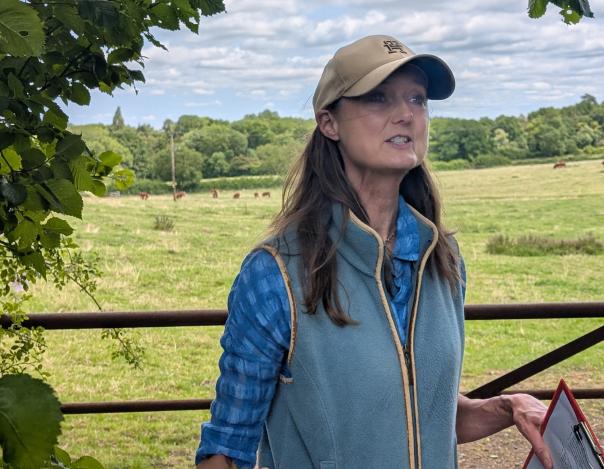
In a landscape of tight budgets, school caterers face mounting pressure to deliver nutritious, affordable meals. Public Sector Catering explores how providers are adopting a streamline solution that lies close to home – buying British.
As recently reported in The Guardian, Judith Gregory (who was LACA chair at the time) reiterated the plight of school meal providers caught between keeping prices accessible while managing rising staff costs and food price inflation. It’s a situation familiar to many in the sector and one that requires fresh thinking when it comes to introducing efficiencies.
It is a procurement challenge that has been met head on by the likes of Chartwells, and innovative, forward looking local authority providers.
Change-making
As a partner of Love British Food, Chartwells shares a commitment to seasonal, sustainably sourced menus. Building menus around availability and pupil preferences, Chartwells actively participate in British Food Fortnight, which this year ran from 26 September – 12 October.
For Alexia Robinson, founder of Love British Food, following Chartwells’ lead and buying in-season means buying what’s abundant, cheaper, and better tasting.
“The school caterers we collaborate with are all working towards prioritising British ingredients on their menus,” she says.
“Through our changemaker training programme, we invite public sector caterers to farm visits to further their understanding of where and how British food is grown.
“By mobilising grassroots partners we’ve shown how a ‘buy British first’ ethos works in practice. Small, practical switches in procurement – seasonal, local, and British – add up to transformational change. It’s something we encourage others to implement.”
Support local producers and SMEs
Derbyshire County Council, a Love British Food Hero, sources 72% of its raw ingredients from British suppliers, alongside its use of British, farm-assured meats.
They like others have built value and resilience through direct relationships with local producers, as shorter supply chains mean fresher ingredients, fewer logistical delays. While local sourcing also helps build greater transparency and trust in ingredient quality.
Alexia Robinson cites this movement as one positive outcome from the pandemic.
“We all saw supply chains break down during Covid. However, some school caterers overcame this by working directly with farms to deliver urgently needed food parcels to local families. That spirit of collaboration has endured,” she says.
Rather than defaulting to large wholesalers, school catering providers are turning to nearby growers and producers who can be more responsive.
“In some instances, meal providers have really got behind this idea. In the case of Nottingham County Council’s County Enterprise Foods, they’ve radically restructured their supply chain to source 100% fresh local produce,” she adds.
Cost-centric
Despite these positive stories, the financial picture remains fraught. Once staffing and overheads are accounted for, some report having as little as £1 per meal to spend on ingredients.
With free school meal eligibility expanding by more than 600,000 children next year, the pressure is set to grow. Regional funding disparities compound the problem with funding gaps making it harder to deliver high-quality, freshly prepared meals across the board.
With this in mind, there’s an urgent need to dispel the myth that fresh, British produce is more expensive – when considered in a wider social and economic context.
As Alexia Robinson notes: “There is a financial and educational value that British produce brings to the table. It plays a crucial role in teaching students about sustainable food practices, fostering an appreciation for their local food systems.
“Equally, we must remember that leveraging procurement frameworks, a crucial part of this transition is rewriting procurement frameworks to prioritise sustainability. By adopting frameworks that favour local and seasonal produce, caterers are supporting a more sustainable food system.
“Change doesn’t have to be overwhelming or costly. Many caterers are finding that even small shifts in their menus can have a big impact. For example, switching suppliers for staples like potatoes can result in both financial and environmental benefits.”
The push for accessible, sustainable British food is not limited to individual schools meal providers. Industry-wide initiatives like those championed by Love British Food and the Soil Association’s Food For Life are helping to build a broader network of caterers committed to these goals.
The road ahead
From the classroom to the community, these choices have a ripple effect, influencing not only what children eat but also how they perceive food, health, and sustainability.
School caterers, with the support of procurement frameworks, local partnerships, and food education initiatives, can lead the charge in creating a food system that is both economically viable and environmentally sustainable.
The journey towards a more sustainable, British-focused school meal programme doesn’t need to be daunting. With incremental changes, forward-thinking strategies, and an ongoing commitment to quality and sustainability, school caterers can continue to deliver delicious, healthy meals for pupils while supporting local producers and reducing environmental impact.
As Alexia Robinson concludes: “Change needs to be accessible and actionable. It is possible to have a positive impact through small but meaningful changes.”